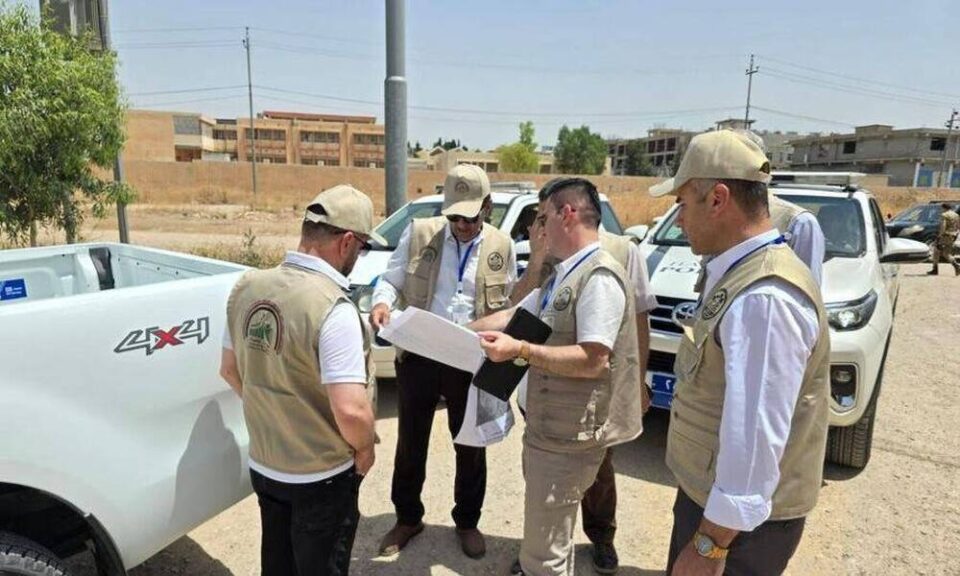Sema
Iraq’s population stands at 46 million, with a significant majority—70.17%—residing in urban areas.
The results of Iraq’s 2024 General Population Census, announced by the Iraqi Ministry of Planning on February 24, 2025, offer a comprehensive snapshot of the country’s demographic landscape. With a total population of 46.1 million people, including the Kurdistan Region, these figures are crucial for understanding Iraq’s current population trends and shaping future policies in multiple sectors, including infrastructure, healthcare, education, and economic development.
Population Growth and Urbanization
Iraq’s population stands at 46 million, with a significant majority—70.17%—residing in urban areas. This reflects an ongoing trend of urbanization, where more people are moving to cities, drawn by better job opportunities, education, and healthcare facilities. This shift indicates an increased demand for urban infrastructure, including housing, transportation, and public services, requiring urgent government attention to manage city growth and prevent overcrowding.
On the other hand, the 29.83% of the population still living in rural areas poses a challenge for policymakers, as it highlights regional disparities in access to resources and development. Rural areas often face obstacles such as limited infrastructure, poor healthcare, and a lack of economic opportunities, which need targeted interventions to prevent further inequality.
Youthful Demographic and Economic Implications
A striking feature of Iraq’s population is its youthfulness, with 60.44% of the population aged between 15 and 64 years, which represents the working-age population. This demographic provides both a challenge and an opportunity for Iraq’s economy. The large workforce can drive economic growth if adequately employed, but it also places pressure on job markets, especially in urban areas, where most of the population is concentrated.
The fact that 11.16% of the population is under the age of 5 and 24.74% falls within the 5-14 age group suggests a continued growth trajectory. However, this growth requires careful planning in terms of education, healthcare, and future employment. The government must invest in long-term strategies that include expanding educational facilities, providing quality healthcare, and creating job opportunities to capitalize on this youthful population and avoid high youth unemployment rates.
Marriage, Family, and Social Structure
The marital status data shows that 51.04% of Iraq’s population is married, with 46% being single and 2.8% either widowed or divorced. The fact that the average marriage age is 24.06 years for males and 20.7 years for females highlights a relatively young age for marriage. This early marriage trend is prevalent in many developing countries and has social and economic implications. Early marriage can impact educational attainment, career opportunities, and overall economic stability, especially for women.
Additionally, the data on households reveals that 70.16% of families own their homes, indicating a relatively high level of homeownership compared to global standards, though the housing sector still needs attention to accommodate the rapidly growing population, particularly in urban areas.
Economic Activity and Workforce Participation
The census shows that 41.61% of Iraq’s population is economically active, with 38.25% employed in government sectors. This reliance on the public sector may point to a lack of private sector job opportunities, highlighting the need for economic diversification. The 46.06% of the population that is economically inactive could represent various groups, including students, homemakers, and individuals who have not yet entered the workforce.
A significant portion of the working-age population in Iraq is employed by the government, suggesting a need for private-sector growth, particularly in industries like manufacturing, technology, and services. Encouraging entrepreneurship, foreign investment, and the development of small and medium-sized enterprises (SMEs) could help reduce public sector dependence and create a more robust and diversified economy.
Education and Literacy Rates
The illiteracy rate stands at 15.31%, with a slightly higher rate of 16.23% in the Kurdistan Region. This figure points to a substantial challenge in education, which must be addressed for the country to fully harness its young population’s potential. While Iraq has made progress in expanding education in recent years, these statistics suggest there are still significant gaps, especially in rural areas where access to quality education remains limited.
The enrollment rate for male students stands at 51.5%, indicating a gender disparity in education, as this number suggests that fewer girls may be attending school. Promoting gender equality in education and ensuring equal access to educational opportunities will be crucial for fostering a balanced and sustainable workforce.
Public Services and Infrastructure
The census data also sheds light on Iraq’s progress in providing basic public services. An impressive 87% of households have access to clean drinking water, while 96.3% of households have access to electricity and 96.9% to sewerage systems. These statistics demonstrate significant strides in improving public infrastructure in Iraq, although challenges remain, particularly in rural areas where infrastructure gaps are still wide.
The quality and reliability of these services, particularly in rural and conflict-affected areas, will be key in determining how effectively Iraq can improve the quality of life for its citizens. Ensuring sustainable management and equitable distribution of these resources will be vital as the country continues to develop.
Conclusion and Policy Implications
The 2024 census results highlight Iraq’s youthful population, growing urbanization, and the need for substantial investments in education, infrastructure, and economic diversification. While the country has made progress in improving access to basic services, challenges remain, particularly in addressing the disparities between urban and rural populations.
Policymakers in Iraq must focus on creating an inclusive economic environment that empowers the youth, provides equal opportunities for both genders and fosters a robust private sector to complement the public sector. Furthermore, long-term investment in education and healthcare is critical for ensuring that Iraq’s growing population can meet the demands of an increasingly complex global economy.
The census results provide a roadmap for future development, with an urgent need to address the challenges posed by a young, growing population in a rapidly urbanizing country.

